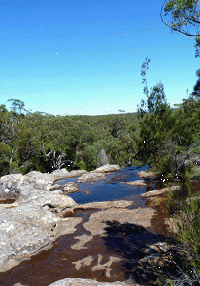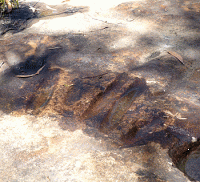Journey through Dharawal and Dhurga Indigenous landscapes – Part 1
In conjunction with the congress, the Australian Centre for Cultural Environmental Research (AUSCCER) at the University of Wollongong, together with NSW National Parks and Wildlife Service, Booderee National Park, and south coast Indigenous groups and businesses, is running a pre-congress field trip to showcase Indigenous landscapes of the south coast and Indigenous community involvement in protected area management.
Through visiting a series of protected areas spanning a diverse range of Indigenous involvement scenarios, A journey through Dharawal and Dhurga Indigenous landscapes of the south coast will be a great opportunity to learn about Indigenous perspectives of landscape in this densely populated and urbanised part of Australia, as well as to engage with the practicalities and challenges of Indigenous involvement in protected areas in such geographies.
With the congress fast approaching, AUSCCERites Michael Adams, Sue Feary and Heather Moorcroft are undertaking reconnaissance visits to firm up arrangements for the three day journey. The first ‘reccy’ visit was to Dharawal National Park. Located just south of Sydney, the 6500 hectare park encompasses a considerable area of Hawkesbury sandstone supporting heath, woodland and forest vegetation, and is dissected with a myriad of creek lines and waterfalls, such as Maddens Falls. A significant portion of the park is also managed as a water catchment area for Sydney, with strict access arrangements in place.
The park is one the state’s more recent additions to the protected area estate, being declared in 2012. However its addition was not without controversy. With conservationists lobbying for the area’s protection against mining for over 30 years, it became politicised during the period of the last state government. Post-election a new NSW government declared the national park all the way to centre of the earth, to prevent mining in the area.
Yet the park is not only known for its unusual declaration and its important natural heritage and water catchment values. As its name suggests, Dharawal National Park encompasses culturally significant landscapes and places. The name of the park comes from the Indigenous language once spoken throughout southern Sydney and the Shoalhaven region and stretching west to Campbelltown. The area incorporates a landscape rich in Indigenous sites, including painted rock art, rock engravings, axe grinding grooves and ancient campsites. The extent and complexity of the cultural heritage parallels other more well-known Indigenous sites in the Sydney area, such as Royal National Park and Ku-ring-gai Chase National Park. Yet, although it is one of the state’s newest national parks and its Indigenous cultural significance obviously evident, media reports suggest that consultation with the local Aboriginal community leading up to the park’s declaration was not wholly inclusive of the local Indigenous community.
Representatives from the Tharawal Local Aboriginal Land Council, whilst supporting the declaration of the park in the hope that it might help protect cultural sites from the impacts of mining, also expressed frustration with the state. Historically, Indigenous people, in Australia and across the world, were largely excluded from conservation efforts (see Adams 2004; Colchester 2004; Goodall 2006). Over the last few decades conservation agencies across Australia have been working with Indigenous communities to achieve active and productive conservation partnerships. It will be interesting to learn more about how the dialogue between the Indigenous community and the state is progressing for this new protected area, as well as learn about the management strategies being developed to ensure Dharawal’s diverse natural and cultural heritage is protected.








